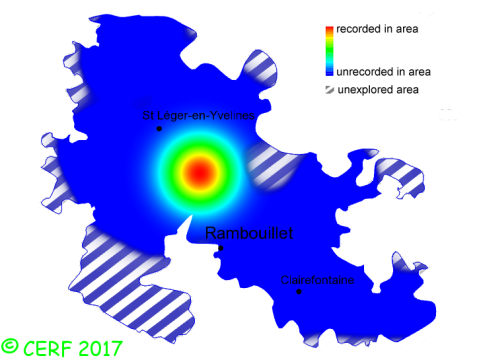|
Hypholoma myosotis (Fr.:Fr.) M. Lange
|
common name(s) : Olive Brownie
New classification: Basidiomycota/Agaricomycotina/Agaricomycetes/Agaricomycetidae/Agaricales/Strophariaceae
Former classification: Basidiomycota/Homobasidiomycetes/Agaricomycetideae/Cortinariales/Strophariaceae
synonyms: Pholiota myosotis, Naucoria myosotis, Flammula myosotis, Hemipholiota myosotis, Phaeonematoloma myosotis
edibility : unknown edibility
|
|
|
The cap is olive to brown; its margin is with white veil remnants, often wavy.
The cap surface is smooth, viscid or sticky.
The stem is very thin, brown, rooting, hollow, without ring.
The flesh is yellowish white, unchanging; the odour is mealy;
its texture is fibrous.
The gills are yellow to light brown, adnate, crowded .
The spore print is cigar brown. This species is saprophytic.
It grows on the ground, in broad-leaved (sometimes coniferous) damp woods, marshlands.
The fruiting period takes place from July to November.
| Dimensions: | width of cap approximately 3.5 cm (between 1 and 8 cm) |
| | height of stem approximately 10 cm (between 4 and 20 cm) |
| | thickness of stem (at largest section) approximately 4 mm (between 1 and 7 mm) |
Distinctive features : cap surface sticky and slimy; very thin stem
Hypholoma myosotis is rare and confined in the forest of Rambouillet, and is infrequent, more generally speaking
.
|  | | Above : distribution map of Hypholoma myosotis in the forest of Rambouillet |
|
page updated on 14/01/18
